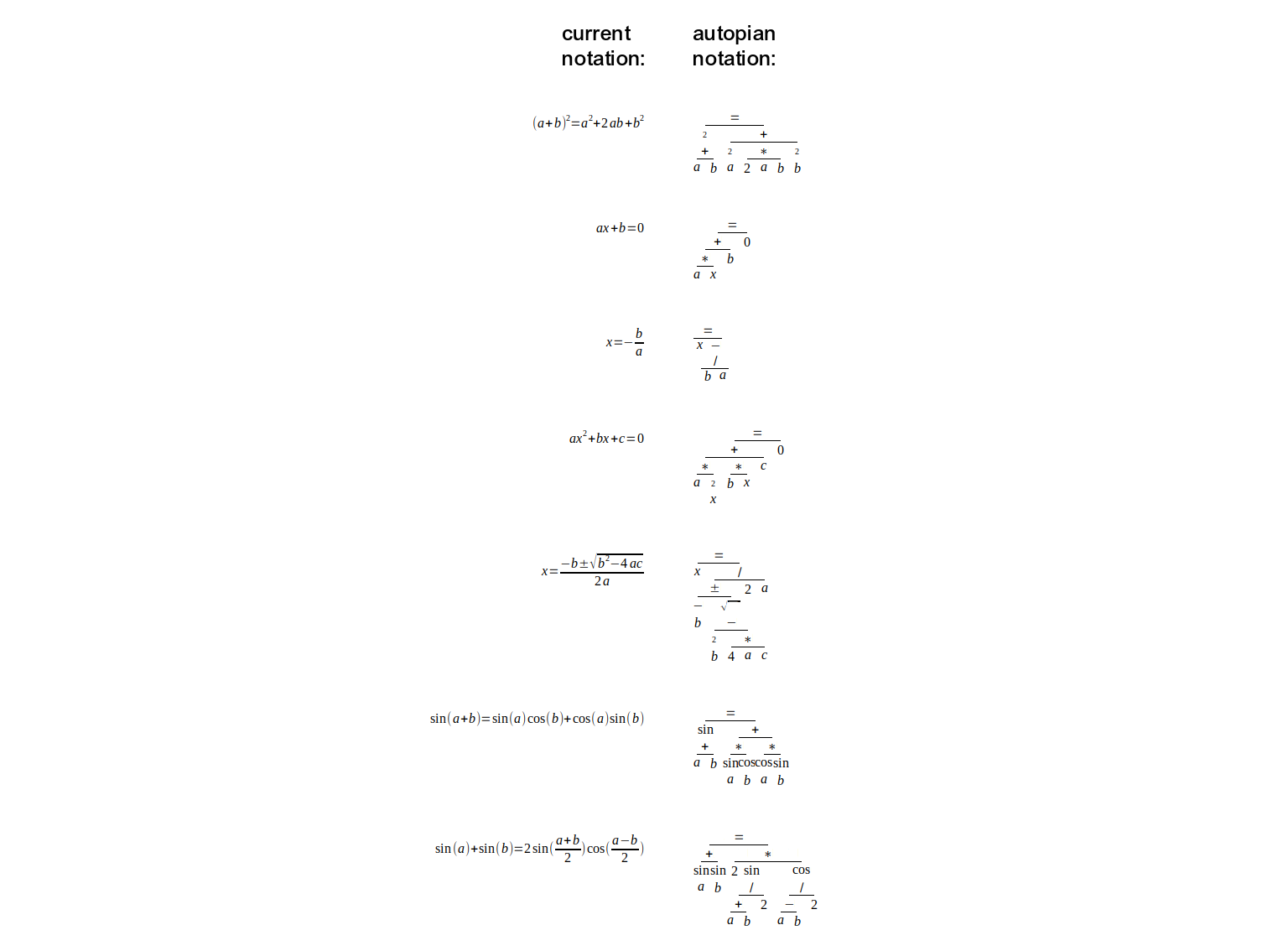
Mathematical Notation
(WARNING: this system is currently under development and might differ from the final one)
Abstract
The official international standard of mathematical notation of the Universal Selfederation.
It is also intended to be used in scientific equations and formulas.
Syntax
In the autopian mathematical notation, every expression has the same basic form;
any given function application is represented by an horizontal line (called "application line") separating the function operator from its arguments; the first is placed above the line, the latter are arranged horizontally below it.

Examples of basic expressions: generic function "a" applied on an increasing number of generic arguments ("b", "c" and "d").
Expression can be nested: if a function application is in turn an argument of another function, the other arguments of the latter are lined next to the former one's operator, outside the range of its line.

Example of a nested expression: function "a" applied on the arguments "b", "c" and a third argument that's the result of the function "d" applied on the arguments "e", "f" and "g".
If a function application is in turn the function of another application (i.e.: the first one is an higher-order function), the whole expression of the former is used as the latter's operator, and therefore it lies above the arguments of the latter.

Example of a nested expression: higher-order function "a" applied on the arguments "b", "c" and "d", resulting in another function applied on the arguments "e", "f" and "g".
The system features some rules for simplifying complex expressions:
1) An application line does not need to span the entirety of its arguments' expressions: it only needs to be long enough to barely reach (width-wise) all the symbols involved in its expression who are immediately above it or immediately below it

Examples showing how certain expressions can be simplified.
Examples

Examples of mathematical expressions written with the syntax of the autopian notation.
Symbology
(Work in progress...)